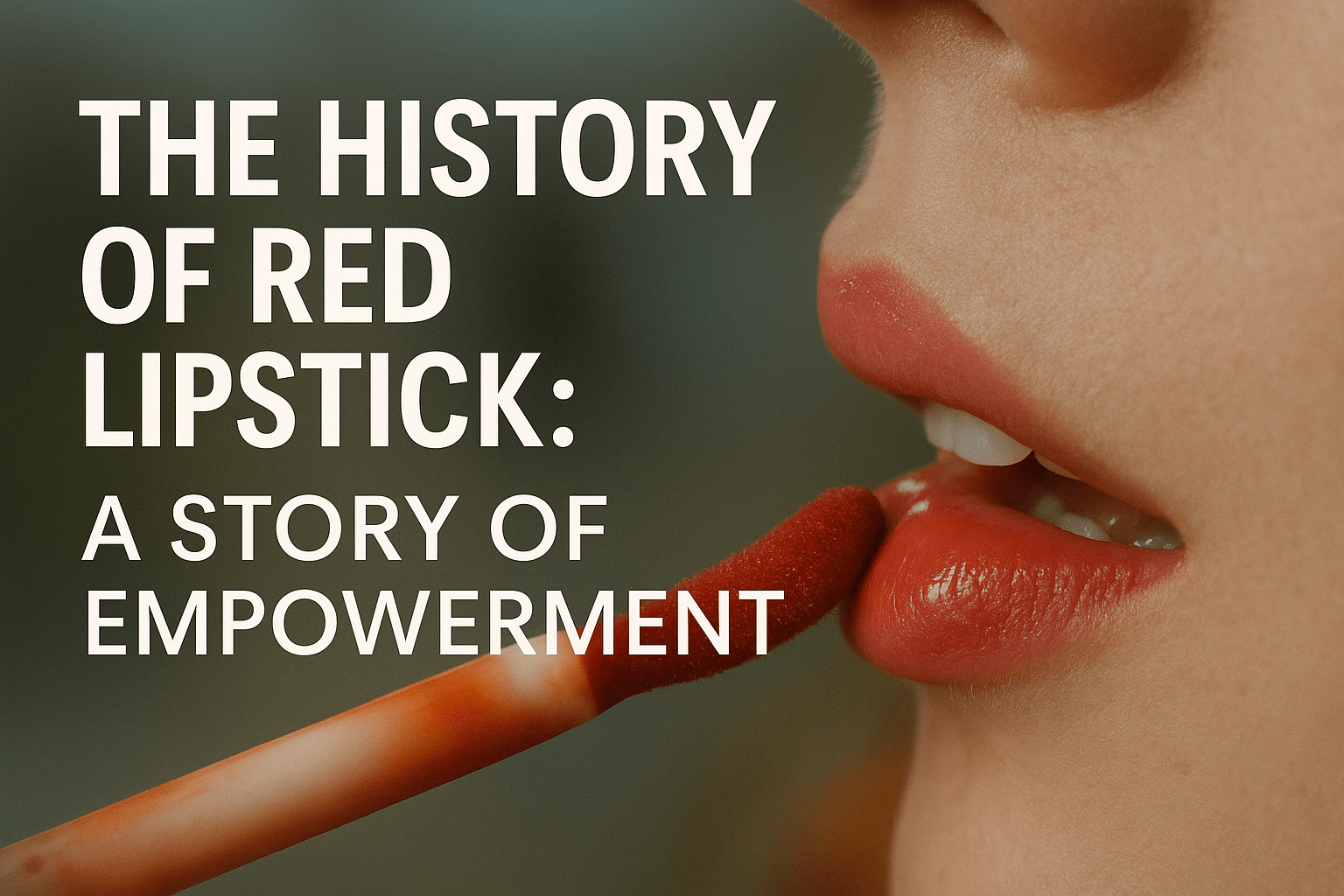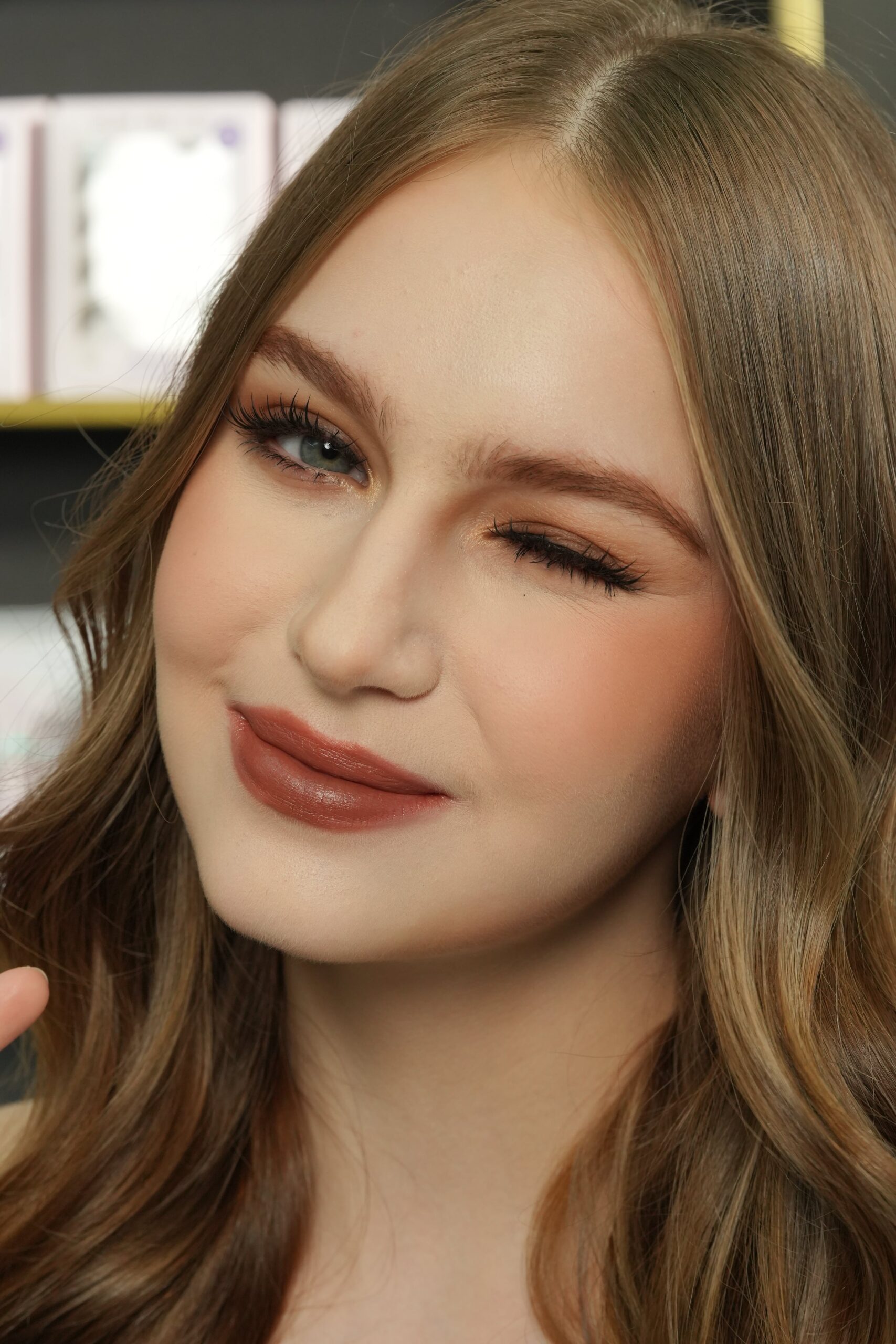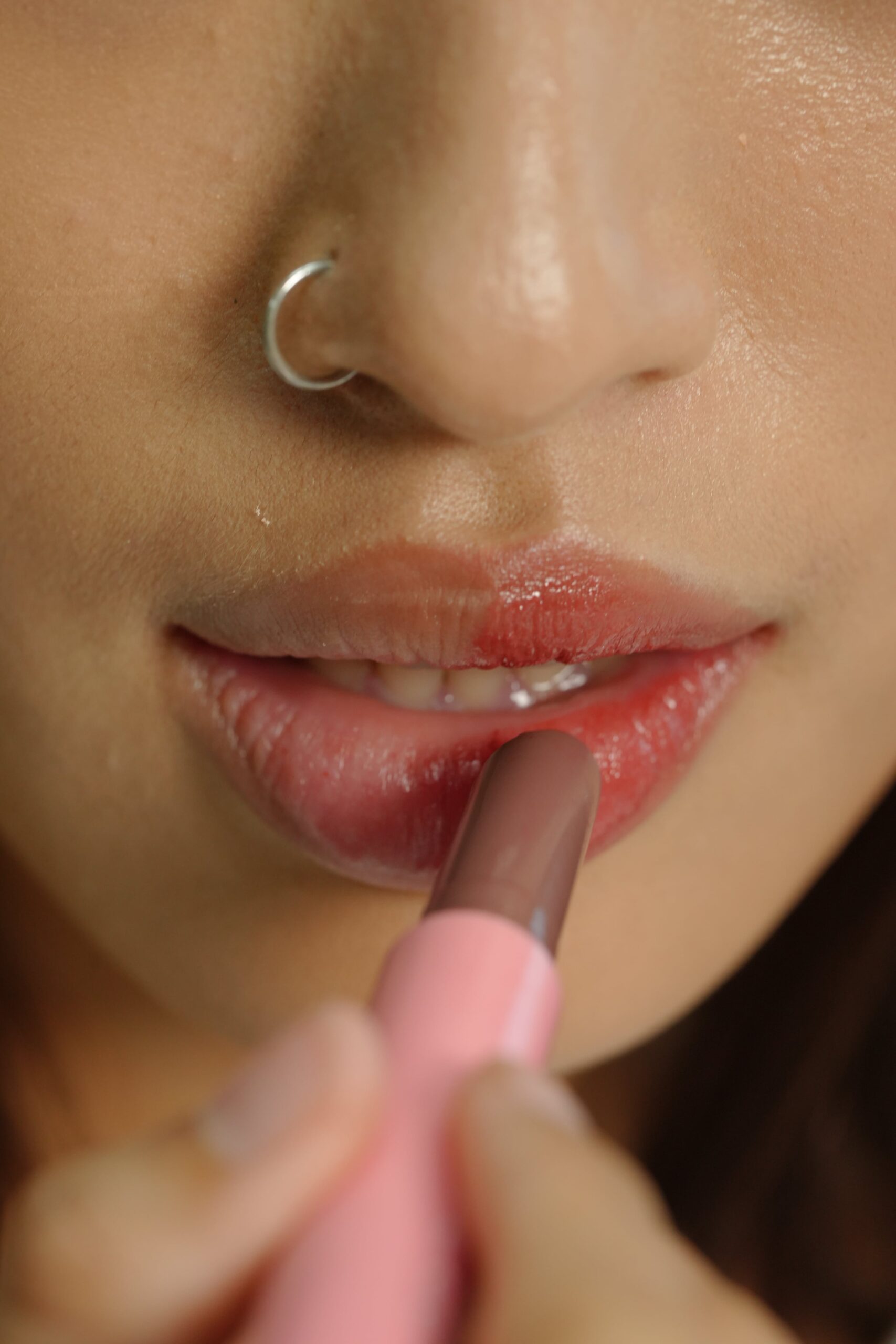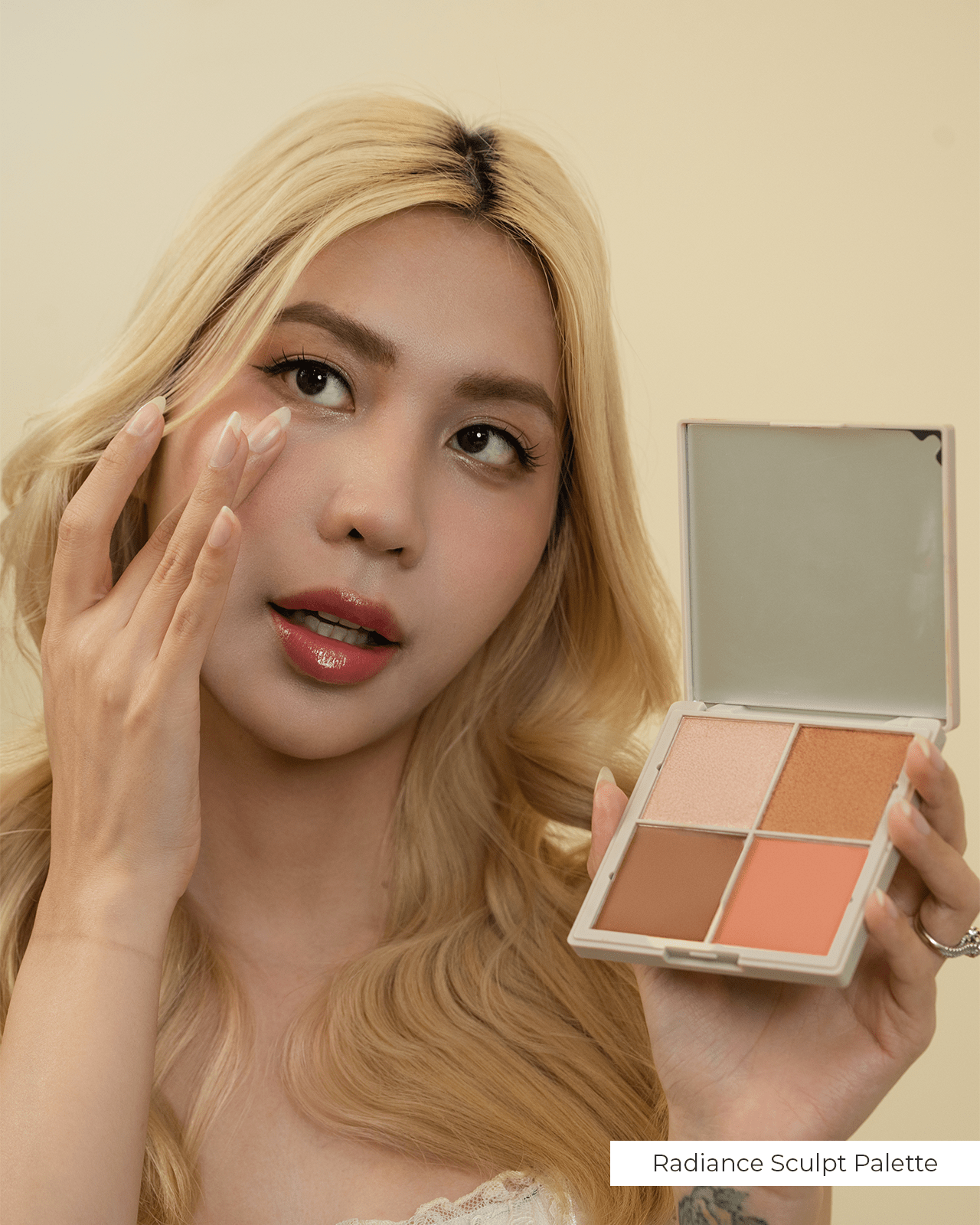Your cart is currently empty!

The History of Red Lipstick: A Story of Empowerment
Explore the captivating history of red lipstick. This guide uncovers its powerful symbolism and how it became an enduring icon of rebellion, glamour, and female empowerment.

The history of red lipstick is a fascinating journey through centuries of cultural shifts and social changes. It is more than just a beauty product; it has served as a symbol of power, rebellion, confidence, and freedom. Consequently, its story is deeply intertwined with the broader history of women’s liberation and identity. From ancient civilizations to the modern era, red lipstick has carried a message that goes far beyond beauty.
In this blog, we will explore the captivating history of this iconic cosmetic. We will discuss its origins, its role in key historical movements, its connection to popular culture, and its enduring symbolism today. Therefore, get ready to discover the true power behind a simple tube of red lipstick.

Ancient Origins of Red Lipstick
The use of red lipstick dates back to some of the world’s earliest civilizations. In ancient Mesopotamia, both men and women crushed gemstones and minerals to tint their lips. Red lips were not just about beauty—they reflected wealth, social standing, and spiritual meaning.
In ancient Egypt, lipstick carried an even deeper symbolism. Cleopatra herself famously used a red pigment made from crushed carmine beetles and ants mixed with wax. For Egyptian royalty, red lips were a display of divine power and seduction. To them, painting lips was as much a ritual as it was a cosmetic enhancement.
However, in ancient Greece, red lipstick had a more complicated role. It was sometimes associated with courtesans, making it a social marker of profession rather than status. This illustrates how, from the very beginning, red lipstick carried layered meanings—both empowering and stigmatizing.

Red Lipstick Through the Middle Ages and Renaissance
The symbolism of red lipstick shifted drastically during the Middle Ages in Europe. The Christian church condemned cosmetics, claiming they were linked to immorality and even witchcraft. Wearing red lipstick could brand a woman as sinful or deceitful.
By the Renaissance, however, lipstick made a comeback in royal courts. Queen Elizabeth I popularized pale faces paired with bright red lips made from plant dyes and beeswax. To her, red lips represented power, majesty, and theatricality. At this time, lipstick started moving closer to the modern idea of beauty enhancement while still being heavily influenced by social class.

Red Lipstick as a Symbol of Empowerment in the 20th Century
The modern history of red lipstick is perhaps the most compelling chapter. During the early 20th century, red lipstick transformed into a political and feminist symbol.
-
Women’s suffrage movement: Leaders of the suffrage movement, including Elizabeth Arden, handed out red lipsticks to women during marches. Wearing it became an act of rebellion and unity. Red lips symbolized the fight for women’s right to vote and take space in society.
-
World War II: During the war, red lipstick was encouraged as a way to keep morale high. Makeup brands marketed patriotic shades, with names like “Victory Red.” It wasn’t just cosmetic—it was psychological armor. Red lips gave women confidence as they took on roles traditionally held by men, proving that beauty could also be a form of resilience.
This era solidified red lipstick as more than just a trend; it became a cultural weapon of empowerment.

Hollywood and the Glamour Era
If the suffragettes politicized red lipstick, Hollywood immortalized it.
From the 1940s onward, film icons like Marilyn Monroe, Elizabeth Taylor, and Rita Hayworth made red lipstick synonymous with seduction and glamour. A swipe of red became shorthand for femininity, allure, and power on screen.
Marketing campaigns followed, making red lipstick accessible to every woman—not just the wealthy. Drugstore brands began producing affordable versions, ensuring that every woman could embrace this symbol of glamour.
By the 1970s and 80s, red lipstick found new meaning in subcultures. Punk rock artists and feminists adopted bold reds as an act of defiance. Instead of softness, red lips symbolized anger, rebellion, and individuality. Once again, it proved that this product could be endlessly redefined.

Red Lipstick Today: Confidence and Identity
In the 21st century, red lipstick remains a universal symbol of confidence. Unlike in the past, when its use was dictated by class or politics, today it is embraced by everyone—regardless of gender, age, or background.
For many, it is a daily staple that boosts confidence before a meeting or social event. For others, it is reserved for special occasions when they want to feel bold and glamorous. Some wear it to honor feminist history, while others simply enjoy the beauty of the shade.
Importantly, red lipstick has also become gender-inclusive. Men and non-binary individuals embrace it as a form of self-expression, proving that beauty is not limited by traditional norms.
Social media and beauty influencers have pushed its versatility even further. From classic matte scarlets to high-shine glosses and even metallic finishes, red lipstick is no longer one style—it’s an entire spectrum of identities and moods.

Why Red Lipstick Still Matters
The enduring appeal of red lipstick lies in its ability to transform the wearer. A single swipe can shift how you feel and how others perceive you. Whether it’s about empowerment, rebellion, beauty, or tradition, red lipstick has always carried weight beyond aesthetics.
It remains one of the few beauty products that is both timeless and ever-changing. Each era reshapes its meaning, but its essence as a symbol of strength, identity, and empowerment never disappears.

Final Thoughts
The history of red lipstick is not just about fashion—it’s about humanity. From ancient queens to modern activists, from suffragettes to Hollywood stars, red lipstick has transcended being a mere cosmetic. It is a marker of cultural movements, gender expression, and personal power.
Today, when you apply red lipstick, you are not just adding color to your lips—you are embracing centuries of history, rebellion, and self-expression. Ultimately, that’s why this small item remains one of the most powerful icons in beauty.

Leave a Reply